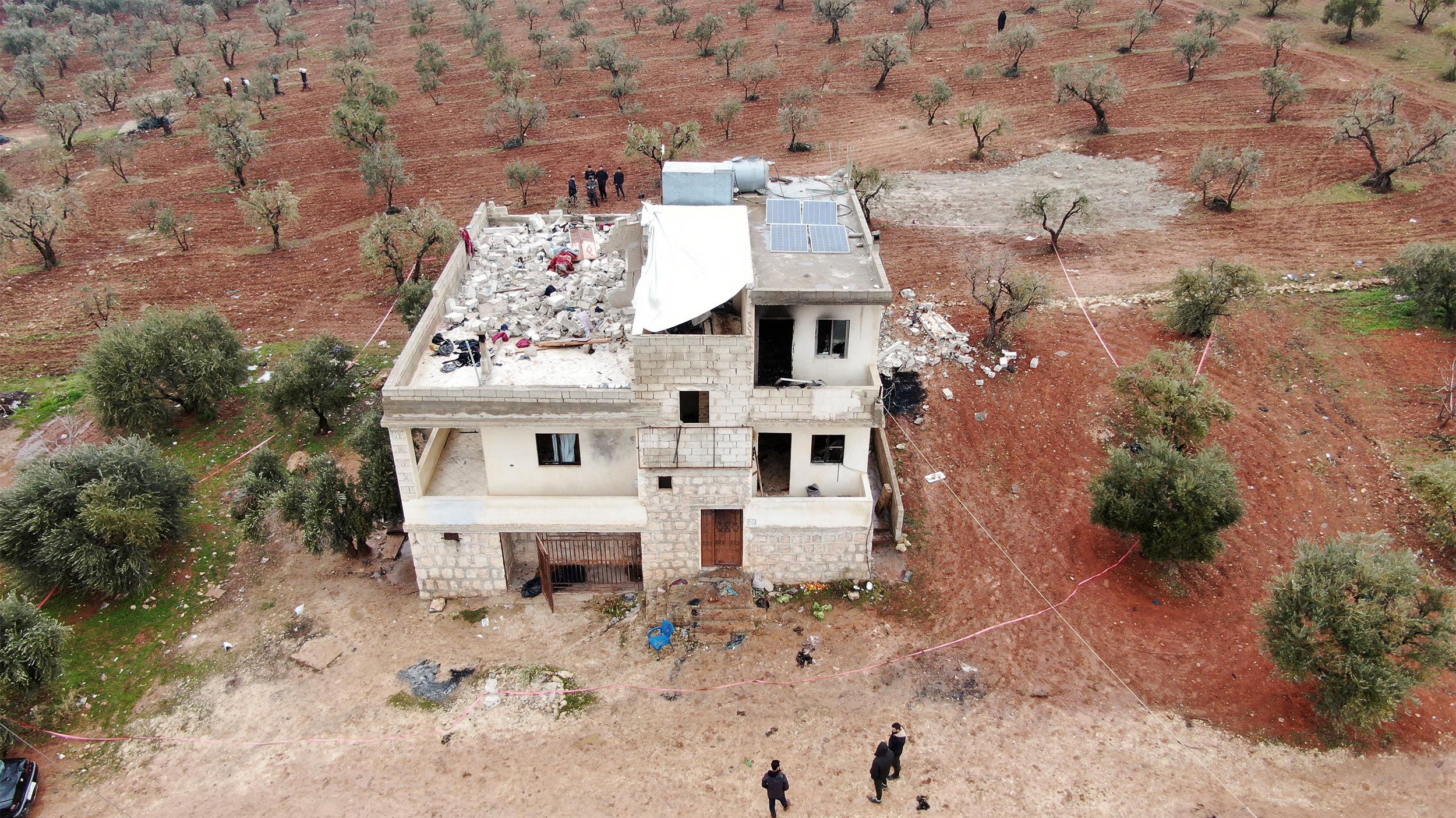
Introduction
On 3 February 2022, US President Joe Biden announced that the leader of the Islamic State (IS), Abu Ibrahim al-Hashimi al-Qurashi (Mohammed Said Abd al-Rahman al-Mawla), had been killed in a military operation by US forces in northern Syria. “Last night at my direction,” Biden said in a White House statement, “U.S. military forces in the northwest Syria successfully undertook a counterterrorism operation to protect the American people and our Allies, and make the world a safer place.”
The death of al-Qurashi, the second caliph of IS, raises questions about how the structure of the organisation is evolving, its changing context, and the implications of these shifts.
Context and implications
Al-Qurashi assumed the mantle of caliph when IS was already a thing of the past. Mosul fell in July 2017, followed by Raqqa in October 2017, and the battle marking the end of the organisation came in al-Baghour, located in eastern Syria, in March 2019. With IS no longer in control on the ground, Washington announced the end of the international war on the organisation. For all practical purposes, the organisation died with the assassination of the founder of the caliphate, Abu Bakr al-Baghdadi (Ibrahim Awwad Ibrahim Ali al-Badri al-Samarrai), in October 2019. After its defeat, IS had no choice but to revert to the tactics and mode of operation that preceded the declaration of the “caliphate” and its territorial sovereignty. That is, it returned to guerrilla warfare waged by decentralised militias. Like al-Qaeda—of which the Islamic State is a descendent or later iteration—it also engaged in offensive actions when the opportunity arose.
The Sinaa Prison operation in the Ghwayran district of Hasakeh in northeast Syria in January 2022 was among its most daring operations and the last after al-Qurashi assumed leadership. According to US National Security Advisor Jake Sullivan, the group aimed to carry out a massive prison break to reconstitute its ranks. Some 5,000 people were held in the prison, including IS fighters and leaders, most of them of Arab or foreign nationality. Dozens of personnel with the Kurdish security forces and Syrian Democratic Forces who were guarding the prison were killed in the operation, along with prisoners; as many as 268 members of IS were killed as well, according to some figures. While the operation demonstrates IS’s continued ability to organise substantial attacks, the losses it sustained and the subsequent killing of its leader similarly show its waning power.
The Islamic caliphate declared by IS is the second such caliphate, in the sense of a theocratic state, in the past two decades. The Taliban movement in Afghanistan preceded IS in this regard, though the major differences between the two organisations must be noted. After taking Kabul in 1996, the Taliban dubbed their leader, Mullah Omar, the commander of the faithful and called their state the Emirate of Afghanistan. Their Islamic emirate quickly fell in 2001 during the US-led global war on terror, launched after the attacks of 9/11. That same war also saw the fall of Baghdad in 2003, opening the door to various jihadi movements in Iraq, among them the Islamic State in Iraq and Syria and its caliphate. It is ironic that al-Qurashi, IS’s second caliph, was killed just as the Taliban had reclaimed their “emirate” in August 2021, though under different conditions. For various reasons, IS had previously called on the Taliban to pledge allegiance to its own caliph, al-Baghdadi, most importantly because its state actually existed on the ground, unlike the emirate of Kabul, whose fall transformed the Taliban into yet another jihadi organisation, at best. The Taliban rejected this appeal, and the Baghdadi caliphate subsequently established a branch in Afghanistan—the Khorasan Province—in January 2015, setting off clashes between the two organisations that continue today.
Despite the fall of IS’s Islamic state, in addition to its branch in Afghanistan, the group maintains other branches as well, most significantly in Africa: the Islamic State in the Greater Sahara, which is active between Niger, Mali and Burkina Faso; the Islamic State West Africa Province, based in Nigeria and active in Chad and Cameroon; and the Islamic State Central Africa Province, operating in Mozambique. All of them operate in different circumstances and contexts, although all are in stiff competition with al-Qaeda. Organisationally speaking, however, their ties to IS are extremely tenuous. Even under Baghdadi, the main link between the parent organisation and its branches was largely—though not exclusively—the declaration of fealty to IS, which bolstered the legitimacy of the caliphate while also burnishing the legitimacy of the branch organisations in their local environment. As the catalyst for this bond no longer exists, the relationship was already fraying under the leadership of al-Qurashi, and it will be weakened further under al-Qurashi’s successor.
A notional caliphate
IS’s greatest lost was the loss of its territorial control and the end of its caliphal state. Since that time, the pull of its ideology has sharply declined because it lost its raison d’etre, in the form of a genuine caliphate with territory and a population. Its priority after the death of al-Qurashi will thus be preserving—if it can—its advantage, by stressing its link with the caliphate. In other words, the organisation’s performance will remain dependent on the animating idea of the caliphate that took shape between Syria and Iraq. This caliphate was its supreme claim to legitimacy and the organisation used it to discredit al-Qaeda and other jihadi currents. Its caliphate enabled it to delegitimise every other organisation. This was why, after the collapse of its state, it was important for the organisation to continue its “operations” based on this legitimacy, as if the battle had not yet been decided and the caliphal state was still fighting to reclaim its territory. The organisation and its leaders are compelled to focus their efforts in the arena of the former caliphate (Syria and Iraq) because it is the focal point of the group’s legitimacy. But this arena constricts the organisation as well. There it faces all the warring parties in the region—the United States, Russia, Turkey, Iran, Iraq, the Syrian regime—as well as forces close to or allied with them, although they may have their own agendas. There is also its bitter enemy, Tahrir al-Sham, in Idlib, though circumstances there make it a haven for refugees, including IS refugees, since the organisation finds a somewhat welcoming environment there. It is thus ironic that both the first and second caliph of IS were killed in Idlib.
Washington’s policy of assassinating IS leaders will impact the organisation as it would any other. With every assassination, commanders must be quickly replaced, even as the pool of experienced leaders consistently narrows. Typically, replacements are chosen in exigent circumstances by a select, isolated few, creating the potential for conflicts over “legitimacy” and the declining importance of competence as a factor. This policy will have more of an ideological impact on IS than on al-Qaeda. The latter was founded on the idea of jihad: the duty to wage jihad with a combat commander against the enemy, typically the United States, wherever it was. Legitimacy for al-Qaeda thus derives from the fight itself, not the leaders of it. It was originally structured as an underground, quasi-military organisation, and it does not aspire to control land or declare a state or a caliphate. The disappearance or non-visibility of its leadership is baked into its thought and strategy.
In contrast, the killing of the IS leadership puts more time between each successive caliph and its founding as an existing caliphal state with territory, a population, an oath of allegiance and soldiers. With time, the Islamic State will lose any meaningful relationship to its eponymous state, becoming a jihadi current searching for new legitimacy. At that point, the caliphate will be merely a conceptual, notional umbrella. IS was established on the basis of a declared caliphate, in the form of a state, whose source of strength was the historical form of the caliphate, not a clandestine leader who never appears in public. These shifts will inevitably weaken IS. Indeed, the process began with the selection of al-Qurashi, who lacked charisma and was unable to make any achievement on the basis of which the organisation could revive its legitimacy or regain its organisational ability to attract followers. The process was already apparent even in the way al-Qurashi was killed: targeted in a far-flung district where he lived with his family under a false identity, far from his organisation. In its own statement issued to deny any cooperation with the United States or tie to the incident, Tahrir al-Sham noted the death of three women and five children in the American operation, mentioning al-Qurashi only in passing.
Jihadi organisations typically do not disappear entirely; they continue, but without influence or with eroded strength. Nevertheless, however weak IS becomes, its extreme violence makes it a continued security threat, particularly since it is still capable of modest growth given the injustices around the region—but only within these limits. Generally speaking, it will continue to decline. Isolation and secrecy are not compatible with the ideology of the caliphate, and this will further undermine the relationship between IS and its branches, perhaps spawning new forces in the process. The same thing happened to al-Qaeda after the fall of Afghanistan, despite its relatively flexibility, and IS itself would likely not have been born were it not for the difficulty of communication between the leadership of al-Qaeda and its branches.
